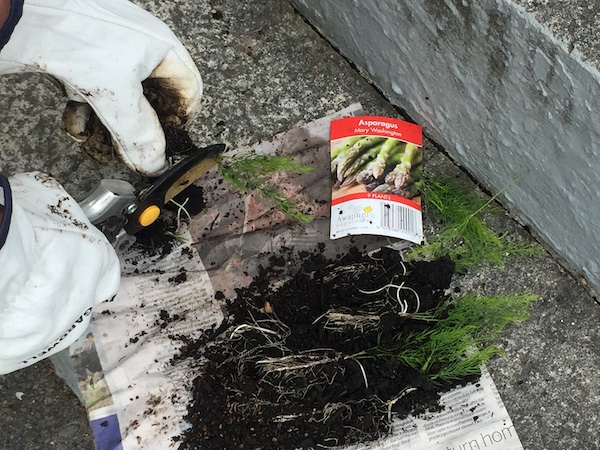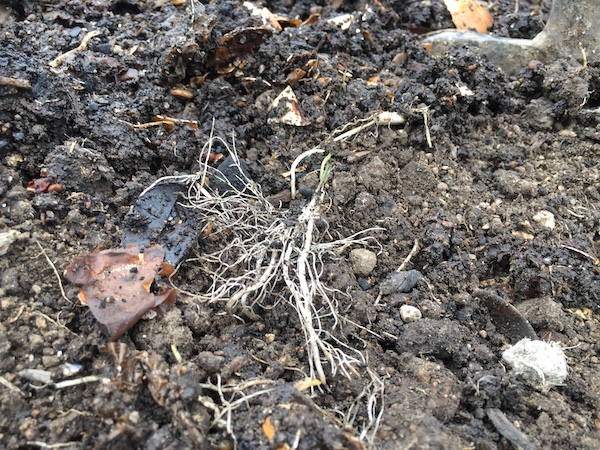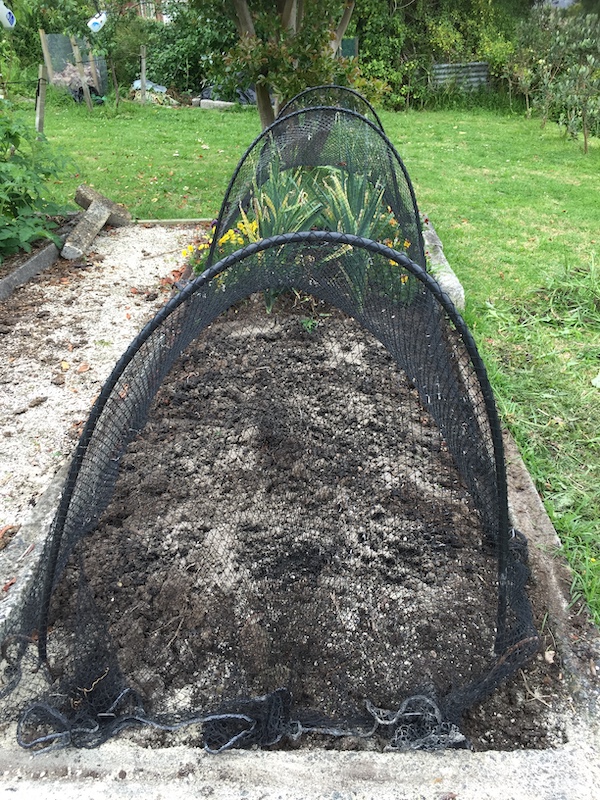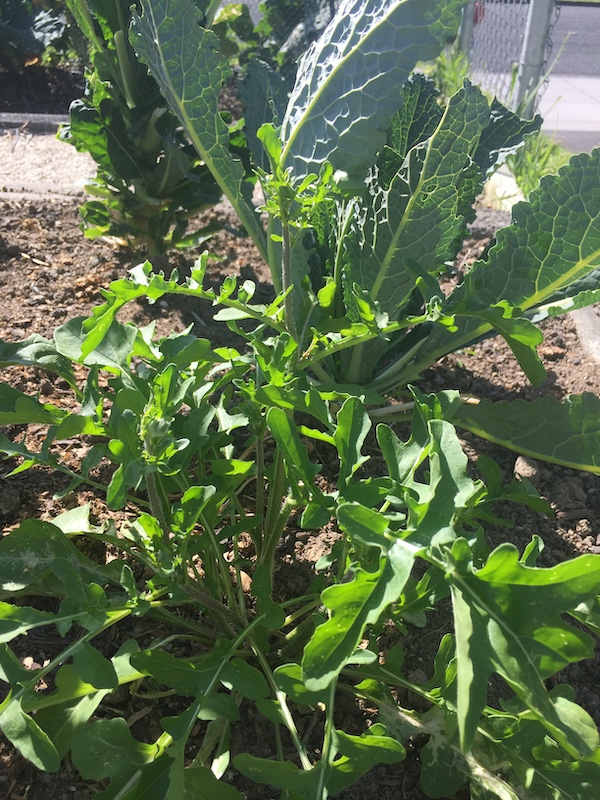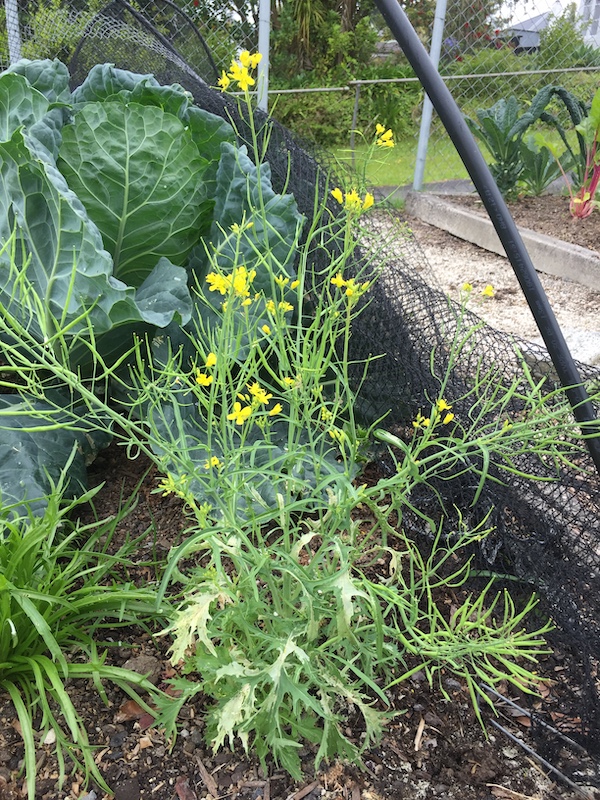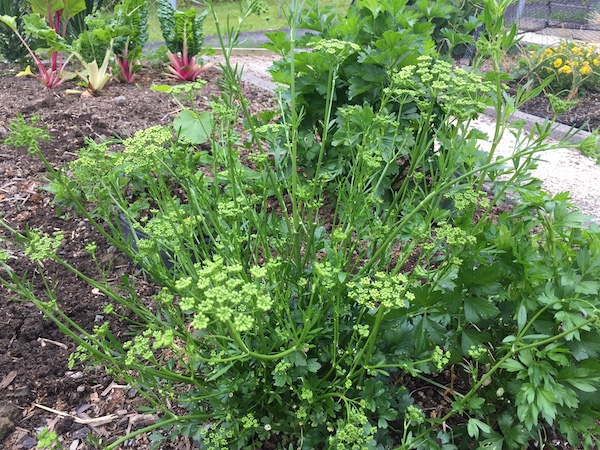Newly planted summer vegetables have been thriving on the extra water we've seen in recent weeks, especially given the water restrictions in place for parts of New Zealand and Australia. In this blog post we discuss how to plant asparagus and why some leafy greens planted in spring have the annoying habit of going to seed early on.

Growing asparagus
Asparagus is a crop that can last in your garden for 20 years, so the key is to find a place where you’re happy for it to be long-term. Add compost to the bed and lime if your soil is acidic. Asparagus likes an alkaline soil. We like the open-pollinated variety called ‘Mary Washington’ and I have had to wait for a few months to get some plants, as there was a delay due to COVID. They take 6-7 months to get to this stage if sown from seed. ‘Mary Washington’ produces male and female spears. Male spears are the long, thin ones and produce 2 or 3 spears a day, whereas the female spears (the thicker ones) usually only bear one spear a day.
Snip the green growth off your plant and shake or wash some of the dirt off.
Then splay the roots over the top of the bed. Space out around 600mm from each other.
Cover the roots or crowns with a good quality potting mix rather than soil, as potting mix contains pumice and good drainage is important for asparagus plants. Rock dust is applied over the bed at this stage. Netting is important as birds can easily scratch the plants out.
It’s best not to pick anything in the first year; in the second year you can pick spears for about a week; and in the third year you can pick for 3-4 weeks. After the fourth year you can pick asparagus spears for months on end.
If you have an existing asparagus bed, chop the old ferns back to make way for the new spears in spring. It’s important to let the old ferns die back fully though, so that energy can go back into the crowns. You can also cover an existing asparagus bed with seaweed (don’t wash the saltwater off). Seaweed acts as a great mulch as well as feeds the plants.
Watch Rob plant asparagus he grew from seed
Leafy greens going to seed prematurely
In spring, it’s exciting to be able to grow the leafy greens we haven’t had for a few months – rocket, mizuna, mesclun, spinach, for example. But how often have you had all your lovely new plants in for only a few weeks when you notice seed heads starting to form? Why is that and why does it happen so often?
Much of it is down to the change of temperature – plants think they’ve come to the end of a growing season when temperatures change from cool to warm and vice versa and that causes the plant to go into reproduction mode. Other reasons are:
- not enough watering of the plant or feeding of the soil – conditions are too harsh for these sensitive plants and they decide to call time
- not being picked enough, so again the plant thinks it’s come to the end of its life and wants to reproduce
- not being planted in the New Moon phase – if these plants go in during a rest period which is during a Last Quarter, they don’t do as well. The New Moon phase is when the energy of the earth is ascending and this is the best time to plant out leafy greens.
So, what can you do about it?
- You can nip the flower heads out, feed up your plant and give it regular good watering, and it may come away. But usually it’s too late and the plant becomes bitter to the taste.
- You can sow a few seeds at a time at regular intervals as these vegetables are short-lived. Then you enjoy them while you can and have the next generation of seedlings ready to go in when needed.
- You can check the pH of your soil and make sure it’s neutral to alkaline. Acidic soils will shorten the life of these plants.
Plants will also go to seed when they’ve come to the end of their life. This parsley has been in for around a year and simply needs replacing.
Happy summer gardening from the team at Organic Edible Garden!
-----
Organic Edible Garden’s vision is to make organic edible gardening achievable for everyone. Visit their website for Getting Started videos, and regular blog posts to find out what to do in your edible garden.
Read more

With perhaps a slight downswing in 2020 - because of you-know-what - life seems to get busier every year. It’s only rarely that we can take time to slow down, get outside and bask in birdsong or hu...

With perhaps a slight downswing in 2020 - because of you-know-what - life seems to get busier every year. It’s only rarely that we can take time to slow down, get outside and bask in birdsong or hu...







